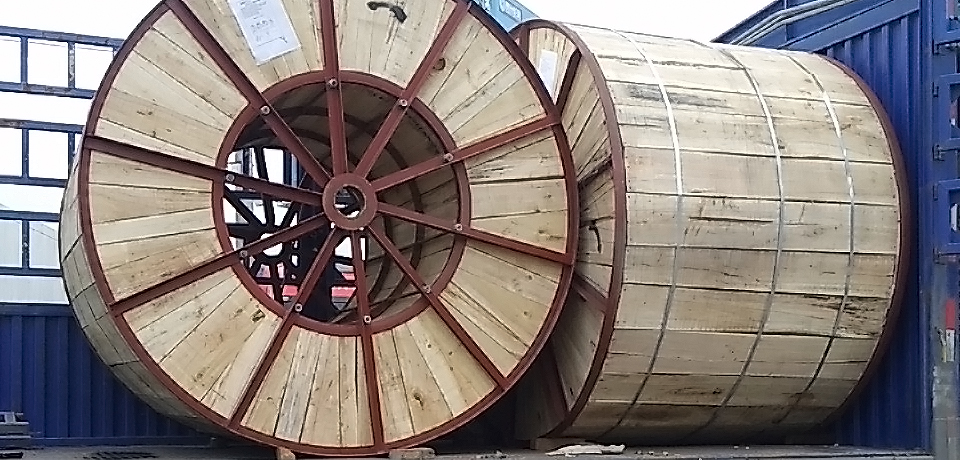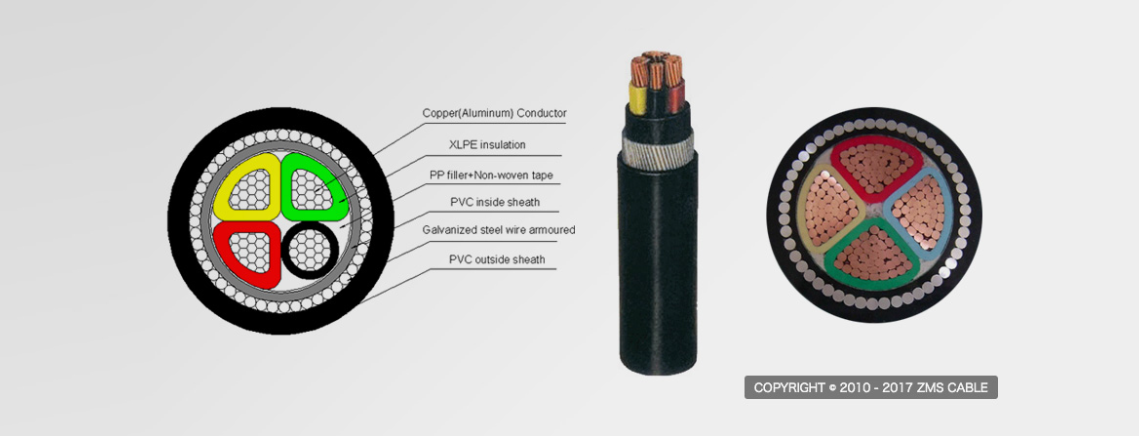
Steel wire armored cable, SWA cable is multicore cable with a layer of steel wire armor, which provides protection from mechanical damage. SWA cables are used as power cables and are usually employed in applications where the cable has to be buried underground and in power networks.
The construction of SWA cables is quite simple too. Here are the main components of an SWA cable:
Conductor: Multiple cores are used, this is usually plain stranded copper. (cables are classified to indicate the degree of flexibility. Class 2 refers to rigid stranded copper conductors as stipulated by IEC standard 60228:2004).
Insulation: insulation is used to protect the conductors from any water damage – a particular issue if the cable is buried underground. It also provides a barrier between the conductors and other metal components, such as the armour.
Usually Cross-linked polyethylene (XLPE) is used in a number of power cables because it has good water resistance and excellent electrical properties. Insulation in cables ensures that conductors and other metal substances do not come into contact with each other.
Bedding: PVC bedding acts as a buffer between the inner ‘live’ parts of the cable and the outer components.
Steel Wire Armour: the armour itself is placed over the bedding, providing mechanical protection, which means the cable can withstand higher stresses, be buried directly and used in external or underground projects. The armouring is normally connected to earth and can sometimes be used as the circuit protective conductor ("earth wire") for the equipment supplied by cable.
Cable sheathing: a sheath is used to protect the inner components of the cable and provides further protection from mechanical damage and stress.
A black PVC sheath holds all components of the cable together and provides additional protection from external stresses.
The PVC version of SWA cable, described above, meets the requirements of both British Standard BS 5467 and International Electrotechnical Commission standard IEC 60502. It is known as SWA BS 5467 Cable and it has a voltage rating of 600/1000V.
SWA cable can be referred to more generally as mains cable, armored cable, power cable and booklet armored cable. The name power cable, however, applies to a wide range of cables including 6381Y, NYCY, NYY-J and 6491X Cable.
Armored cable can be used for a vast array of applications, but is commonly associated with ‘underground’ applications, such as sewers and underground transport networks. When deployed in public places, the cable also has to feature LSLH (low smoke, low halogen) sheathing. This sheathing emits low smoke and halogen in case of a fire, making it a far safer alternative to standard cable sheathing.

You’ll only find steel wiring used in multicore cables. This is because steel is magnetic; when a current passes through a single core, a magnetic field would be produced. This would lead to a current also passing through the steel wire, which could in turn lead to overheating and potentially fire. As this is the case, aluminum is generally preferred in single core cables. For more information on steel wire armored cables, get in touch with zms cable.